Thailand is a wonderful place to visit regardless of the time of the year, and you’re guaranteed to always find warmth and sunshine in at least one end of the country!
Still many people ask: “When is the best time to visit Thailand?”
Of course, with a tropical paradise comes a tropical climate – meaning that Thailand can often be subjected to such extreme weather as 40° Celsius heat, battering monsoons and oppressive humidity.
The good thing is that this weather is generally predictable, and Thailand has well-defined peak and off-peak seasons which tourists tend to base their holidays around.
- Peak season: November to March
- Mid: April to June; September to October
- Off peak: July to August
We’ve assembled a guide to what the weather is like in Thailand every month, together with pricing trends and the major celebrated festivals so you can make the best decision on when you’d like to visit this beautiful country.
Post Contents
Thailand in January
Weather in January
January is one of the best times to visit Thailand as the weather is at its most welcoming. There’s a very low chance of rain and the temperature is comparatively cool with lots of sunshine – it’s the perfect time to hit the beaches!
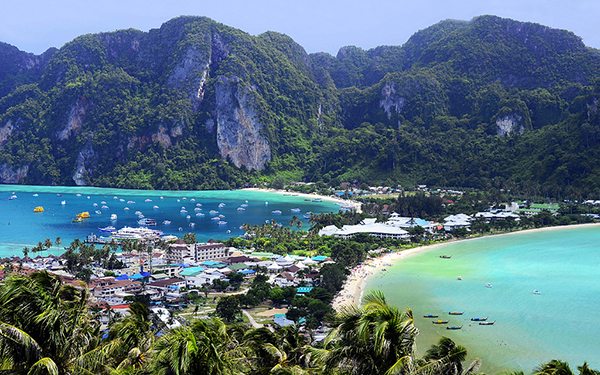
Koh Phi Phi. By Mike Behnken (CC BY-ND 2.0 licence)
Bangkok in January generally sees temperatures between 21 and 32° Celsius, and is usually dry throughout the month with around 10 mm of rain expected at most. Northern Thailand, including Chiang Mai, is marginally cooler – usually enjoying temperatures in the mid 20s – and you may require a light jacket in the evenings.
The weather in January is a little more varied in the south of Thailand. While locations in the Southwest, including Phuket and Krabi, will be dry and sporting temperatures between 26 and 29° Celsius, the Southeast of the country – such as the Gulf islands of Koh Samui, Koh Phangan and Koh Tao – will just be catching the tail-end of the rainy season and will likely experience some rain and showers.
Prices in January
As January in Thailand is considered peak season, prices for hotels and flights are usually marginally more expensive than at other times of the year. Some of the luxury, international hotel chains can be around US$50 more expensive per night in January than they would be later in the year. Return flights to and from Bangkok are usually more expensive too, so it’s worth doing your research and booking early in order to find early-bird deals.
While tourist packages like group tours and excursions are likely to be marginally more expensive in January, there will be no change in restaurant and bar prices, nor metered taxi fares or attraction entrance fees.
Festivals in January
Thailand celebrates a few festivals every January, including:
- New Year’s Day – a public holiday on 1 January
- National Children’s Day – celebrated on the second Saturday of the month and sees the nation’s children bestowed with more affection than usual. There’s often special events and deals available at public places and attractions
- Bo Sang Umbrella Festival – a three day festival in mid-January is celebrated in Bo Sang, a village in Chiang Mai, in order to commemorate the legend of a monk who learned how to create protective Saa paper umbrellas on his journey to Burma. He brought the craft to Bo Sang where the umbrellas have been forever made and sold, and now celebrated. There’s a beauty pageant, opening ceremony, parade, and more.
Thailand in February
Weather in February
February is the tail end of Thailand’s peak season and still sports excellent weather with perhaps very marginally higher temperatures and a slightly higher chance of rain, except in the South of the country where dry weather is more or less guaranteed.
Bangkok in February will see temperatures swing anywhere from the low 20s, up to around 32° Celsius, while Chiang Mai and much of the rest of the North and Northeast region will be slightly cooler with temperatures hovering around the 24-25° Celcius mark. It’s likely to still be very dry on the whole, with perhaps one or two days of rain.
Down in the South of Thailand, February almost guarantees excellent weather – the rainy season should have disappeared and temperatures should be warm and sunny, between around 26 to 29° Celsius.
Prices in February
Now free of the Christmas Holiday premiums and coming to the end of peak season, prices are marginally cheaper in Thailand during February than they would be in January. It’s still worth booking flights and hotels in advance as February can still be pretty busy with tourists – especially in Bangkok and on the islands.
The Chinese New Year festival brings a lot of Chinese tourists to Bangkok during February, so you may find that some of the luxury hotels have a price premium during the festival period. Unless you want to partake in the festivities, it may be worth travelling to Bangkok later in the month to avoid the tourist influx.
Festivals in February
- Chinese New Year – the dates usually fall somewhere during January or February and, although it is celebrated all over Thailand, is most keenly felt in Bangkok’s Chinatown.
- Chiang Mai Flower Festival – held on the first weekend in February and celebrated with numerous parades, pageants and other entertainment, all of course adorned with huge floral displays.
- Makha Bucha Day – another public holiday which is held in either February or March (on the full moon day of the third lunar month), celebrating the day when 1,250 disciples came to see the Buddha in the Veḷuvana bamboo grove without being summoned.
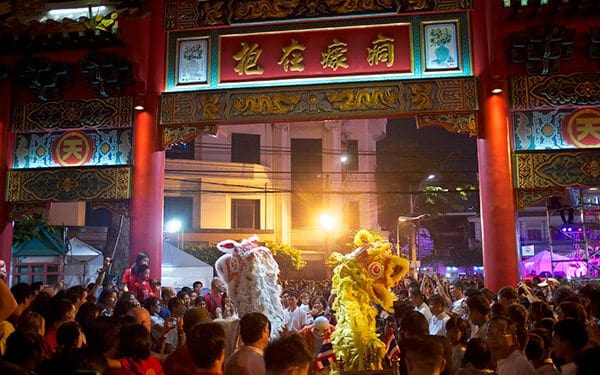
Chinese New Year in Bangkok. By Aleksandr Zykov (CC BY-SA 2.0 licence)
Thailand in March
Weather in March
Temperatures start to ramp up in March throughout Thailand, and while the weather is still usually dry, some may find the heat uncomfortable in the Central and Northern regions, and choose to spend time in the islands and welcoming waters of the South instead.
In Bangkok, average temperatures are usually between the mid 20s and mid 30s. Northern and Northeastern Thailand experiences the same heat but is also blighted by a gritty and uncomfortable haze from the farmers who burn their fields in preparation for the new season.
March is a great time to visit the islands and the Southern part of Thailand – particularly the Gulf islands of Koh Tao, Koh Samui and Koh Phangan in the Southeast where temperatures are marginally cooler than the rest of the country (up to a maximum of around 32° Celsius). As peak season ends in March, you can also enjoy quieter resorts and beaches during this period.
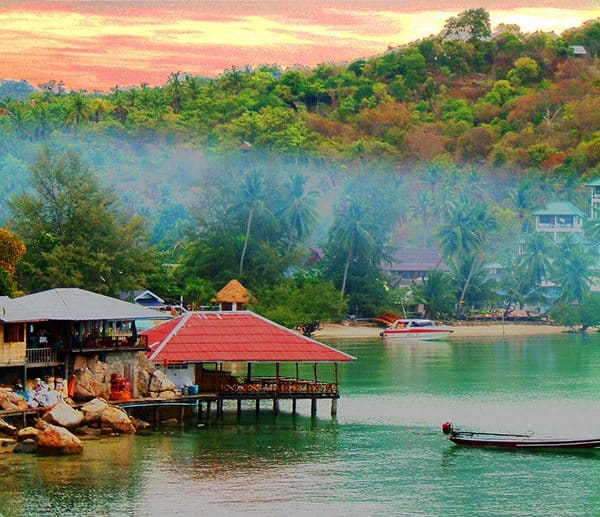
Koh Tao. By Retinafunk (CC BY-SA 2.0 licence)
Prices in March
It’s always worth booking well in advance for Thailand in March to take advantage of any price deals on flights and hotels, but generally you will find prices to be similar to February. If the Easter holidays fall during March, you may find prices marginally inflated in order to take advantage of the vacationing tourists.
Festivals in March
- International Balloon Festival – international balloon pilots visit Chiang Mai in order to perform in this festival, which also honours the local Lanna heritage and other Chiang Mai balloon traditions.
- King’s Cup Elephant Polo Tournament – a huge charity event which sees polo played on the back of elephants at the Anantara Riverside Bangkok Resort.
- Pattaya Music Festival – international and local music acts perform at this highly anticipated annual music festival in Pattaya.
- Wat Bang Phra Wai Khru and Tattoo Festival – held in Nakhon Chaisi every March, this festival sees the magical charging of sak yant tattoos and is one of Thailand’s most unusual festivals.
- National Thai Elephant Day – 13th March sees the formal recognition of the Thai elephant with Buddhist ceremonies and present-giving to the elephants in zoos and parks throughout Thailand.
- National Muay Thai Day – 17th March is annually celebrated by Muay Thai fighters in honour of legendary Nai Khanom Tom. The festival is especially visible in Ayutthaya.
Thailand in April
Weather in April
There’s no getting around it – Thailand in April is very, very hot. Especially in Bangkok and the rest of the Central region. With ‘winter’ well and truly over, temperatures are known to hit 40° Celsius and above with seemingly no let-up – and the fact that the rainy season is imminent, means that the weather can be sticky and humid.
Average temperatures in Bangkok tend to oscillate between late 20s on a good day, reaching around 36-38° Celsius on a bad one. Chiang Mai, the North and Northeastern regions are equally hot and is also suffering the hangover of the haze from where farmers have burned their stubble fields to prepare for the new planting season.
Again, the South of Thailand is the preferred spot for many during April as the seas provide some brief respite from the heat. You’re also likely to see a little more rain and temperatures between 21-32° Celsius.
Prices in April
Although the heat is off-putting to many tourists venturing to Thailand in April, the fact that the Easter holidays usually fall within the month can mean that flight prices – and very ocassionally, hotels – are marginally higher than usual in order to take advantage of the extra people travelling. Also, Thailand’s biggest festival – Songkran – is celebrated during April, which draws in plenty of tourists.
You’re likely to find that hotels and resorts in the South of Thailand, including on the islands, are marginally cheaper than usual with a few extra deals to be had, thanks to the expected rains. Many of the smaller islands – and those closer to the Malaysian border – tend to close around mid-May thanks to the incoming monsoon, so this could be your last chance for a while to see some of Thailand’s natural island beauty.
Festivals in April
- Songkran Festival – the traditional Thai New Year festival is held around mid-April every year, and is characterised by the throwing of water in the streets. There’s usually around 3 days of public holiday for the celebrations.
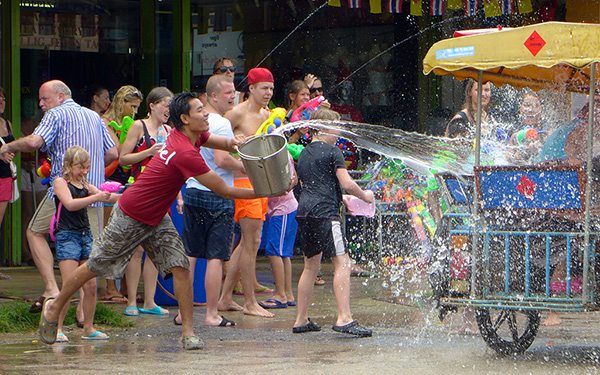
By Madeleine Deaton (CC BY 2.0 licence)
Thailand in May
Weather in May
The rainy season begins to rear its head in May and towards the end of the month, temperatures start to drop and the rains start to sweep in. Although it’s not usually as hot as the April peak, May is still very warm and, for many, the rains are a pleasant relief from the searing heat.
Temperatures in Bangkok and Chiang Mai will still see temperatures between around 25-34° Celsius in May, and this is mirrored throughout much of the rest of Thailand. Rain will be felt everywhere, but is particularly prevalent in the Eastern region, as well as the islands in the Southeast and Southwest.
Prices in May
Prices begin to drop off in May for the first point in the year, as the rains deters many holidaymakers from Thailand during this time. If you’re happy to put up with the rain – which is still warm – then you can score some great deals in Thailand in May.
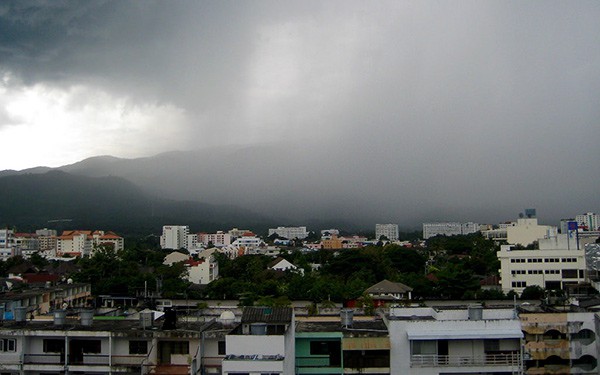
By Dan Mittler (CC By 2.0 licence)
Festivals in May
- Bun Bang Fai Rocket Festival – rocket festivals are common throughout the Northeast during May as a way to welcome in the rains, and the most (in)famous is Bun Bang Fai in Yasothon.
Thailand in June
Weather in June
The rains continue in June, but are more like short and sharp downpours compared to the monsoons seen in later months. In many places, the rain will marginally lessen from May – although you can still expect regular showers in the East of Thailand, particularly on Koh Chang. The chance of rain throughout the country increases towards the end of the month.
Average temperatures for Thailand in June are, across the board, somewhere between late 20s to early 30s Celsius, and it’s likely you’ll find it slightly cooler than the month before. June marks the start of the jungle trekking season in Thailand and is certainly a perfect time to explore: you’ll find that the rainshowers bring out the natural beauty of the lush landscape and make everything much greener!
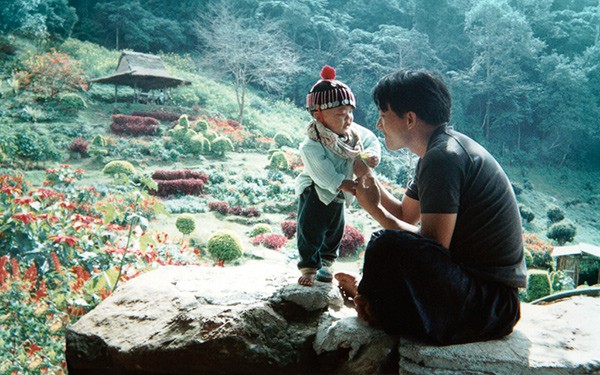
A Chiang Mai hill tribe. By Charlie Marshall (CC BY 2.0 licence)
If you’re really keen to avoid the rain as much as possible, your best bet is to head to the Gulf islands of Koh Samui, Phangan and Tao which generally receive much less rain than anywhere else in June.
Prices in June
As June is headed towards off-peak season, prices for flights and hotels are likely to be at their lowest yet so this is one of the cheapest times to visit Thailand. As June generally doesn’t clash with any international school summer holidays, you should also find that hotels and resorts are a little quieter than the rest of the year – perfect if you’re looking for some rest and relaxation.
Festivals in June
- Rayong Fruit Festival
- Ghost Mask Festival – a raucous Buddhist festival held in Loei, originating from when a party celebrating the Buddha in a past life was so loud that it woke the dead. Also known as Phi Tha Khon. It’s either celebrated in June or July.
Thailand in July
Weather in July
The rains step up a little more in July while average daily temperatures will drop ever so slightly to around the late 20s Celsius. August is often considered the peak of Thailand’s rainy season, so you can expect additional and heavier showers towards the end of the month. The East and the North are particularly wet during July, so it may be worth investing in a waterproof poncho if you’re venturing to Chiang Mai or Koh Chang.
If you still fancy checking out the islands, your best bet is to head to the Gulf and Koh Samui, Phangan and Tao, which are marginally less wet than those in the Southwest, like Phuket and Koh Phi Phi. You may find some of the smaller islands are actually closed at this time due to the heavy rains and lack of solid infrastructure.
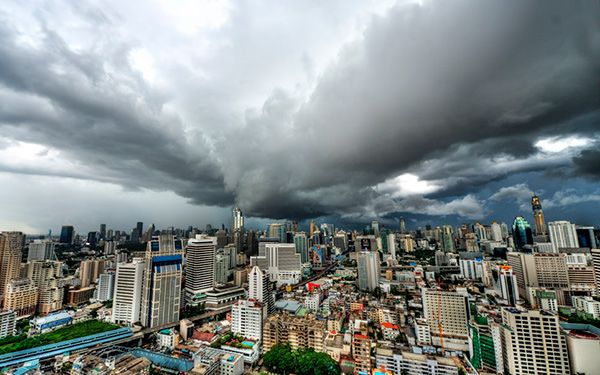
By Mike Behnken (CC BY-ND 2.0 licence)
Prices in July
July is off-peak season in Thailand so prices are comparatively lower than during the rest of the year and you should be able to score hotel deals easily. The school summer holidays in Europe start in July, so it may be worth booking flights well in advance.
Festivals in July
- Ubon Ratchathani Candle Festival – the candle festival marks the start of Buddhist Lent and sees the locals donate candles to the monks to support them throughout the 3-month period.
Thailand in August
Weather in August
Thailand in August is well and truly wet – the monsoon season is here and not many corners of the country are able to escape the rains. For the North, Northeast and the East, this is definitely the peak of the rainy season and you can expect to see rain more or less every day.
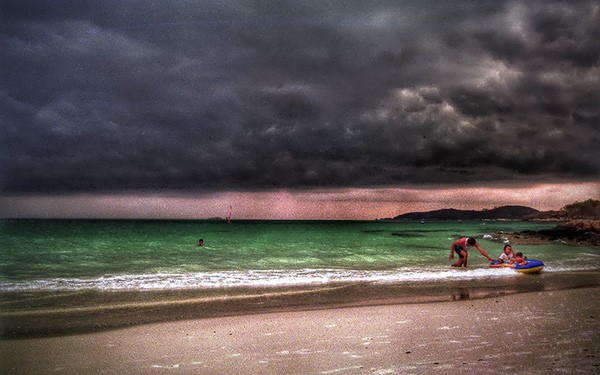
Koh Samet. By *saipal (CC BY 2.0 licence)
In the cities, Bangkok and Chiang Mai are likely to suffer from street flooding, although temperatures continue to hover around the mid 20s to early 30s Celsius. Again, the Gulf islands of Samui, Phangan and Tao are your best respite from the rain during August, while Phuket and Krabi in the Southwest are still pretty wet.
Prices in August
Again, it’s off-peak season so hotel prices throughout the country are around their cheapest. It’s school summer holidays, however, so it’s worth booking your flights in advance.
Festivals in August
- Por Tor Hungry Ghost Festival – Phuket is the site of this traditional Chinese festival, which sees locals honour their sinful dead relatives as they are released from hell for one day only. Food, flowers and candles are offered up across the island.
- Mother’s Day – also, HM Queen Sirikit’s birthday. Expect to see a lot of people wearing blue in her honour!
Thailand in September
Weather in September
As the rains begin to temper in the North, East and South, Bangkok and the Central region is at its peak rainy during September. Average temperatures throughout the country hover between mid 20s and early 30s Celsius, but humidity is also at its peak in September, so it can still be quite uncomfortable.
Chiang Mai is likely to be dryer than Bangkok during September so is worth visiting if you’re itching to see a drier city, although you should still expect some rain as the monsoons begin to move out. As far as the islands go, again, Koh Samui, Phangan and Tao will be the driest, while Phuket and the area surrounding it in the Southwest is likely to still be pretty rainy with potentially quite rough seas.
Your best bet for dry and calm beaches is Hua Hin and Prachuap Khiri Khan on the West coast of the Gulf, around a two-hour drive from Bangkok.
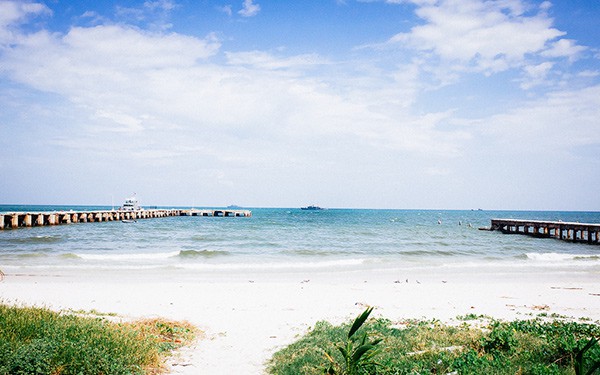
By Anton (CC BY 2.0 licence)
Prices in September
We’re still coming out of the off-peak season in Thailand in September, so prices are cheap and the summer holiday crowd begin to thin out too. Ideal!
Festivals in September
- Phichit and Phitsanulok Traditional Long Boat Races – the annual traditional long boat races are held in Phichit and Phitsanulok on the Nan River. These are some of the oldest and most spectacular boat races in the country.
Thailand in October
Weather in October
Thailand in October sees a period of transition as the rainy season comes to an end and the long-awaited ‘winter’ – i.e. dry weather, cooler temperatures and lower humidity – start to sweep in just in time for the peak tourist season. Bangkok and Chiang Mai see a lot less rain during October although there will still be the odd wet day. Average temperatures tend to cool down a little to somewhere between early 20s and early 30s Celsius, and the humidity lessens hugely once the rains have dissipated.
Not quite as quick to pick after rainy season, however, is the islands. The Gulf islands of Samui, Phangan and Tao that had previously held some respite from the rain, are now thrust into a rainy season of their own. Phuket, Krabi and Trang on the Southwest coast are similarly wet during October.
Prices in October
October marks the end of the low season in Thailand, and although prices are still comparatively low, they do start to creep up the closer you get to November. That having been said, hotels and resorts on the islands in the south are usually still rocking cheaper prices in October thanks to the rains, so you may be able to find a good bargain here.
Festivals in October
- Phuket Vegetarian Festival – also known as the Nine Emperor Gods festival, the Vegetarian Festival is characterised by a period of abstinence from meat, seafood and dairy products, as well as sex, alcohol and gambling, while some men decide to pierce their bodies with ever larger and weirder instruments while supposedly feeling no pain, entranced by the spirits of the gods.
- Lotus Throwing Festival – locals line the banks of the Klong Samrong river in Bang Phli to throw lotuses at a replica of Luang Poh To, a revered Buddha image. You will be bestowed with good luck if your lotus touches the statue.
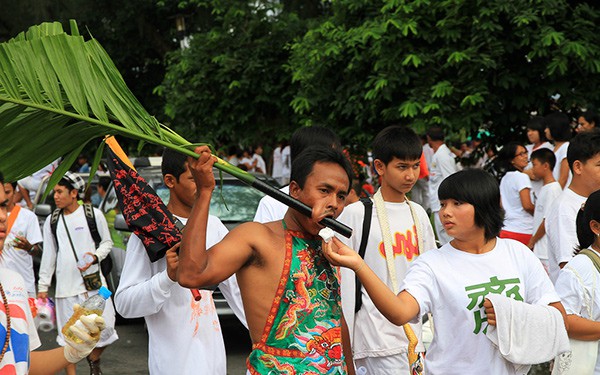
By Binder.donedat (CC BY-ND 2.0 licence)
Thailand in November
Weather in November
November marks the start of Thailand’s high season and this is reflected in the weather – the rains have usually fully retreated by this point, humidity is still low and temperatures comparatively cool in contrast to earlier in the year.
Bangkok sees average temperatures of between 23 and 28° Celsius – when it gets towards the low 20s, you’ll start to see the locals out and about in coats and jeans to adjust to the ‘cold’. In Chiang Mai, it’s even been known to drop below 20° Celsius – positively chilly!
Islands-wise, November is a great time of the year to visit the Southwest of Thailand – Phuket, Krabi and the dotted islands in between them are usually free of rain and enjoying the sun by November. The Gulf islands of Koh Samui, Phangan and Tao, however, tell a different story and are usually the one part of Thailand that is still reliably seeing some rain in November (although not particularly intensely nor necessarily every day).
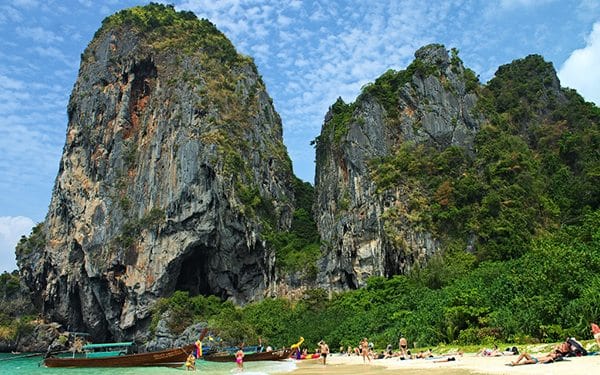
Railay Beach in Krabi. By Nicolas Vollmer (CC BY 2.0 licence)
Prices in November
As the start of the high tourist season, you can expect flight and hotel prices in Thailand to start rising in November, although they’re probably not at their peak until further into December. It’s a good idea to book flights and hotels far in advance, if possible, just in case there are any early-bird deals to take advantage of.
Festivals in November
- Loy Krathong – one of Thailand’s most beautiful and favoured festivals, Loy Krathong sees locals head to the water and release floating krathong (small basket structures), symbolising sending away bad luck. The festivities are particularly epic in Chiang Mai, where it coincides with the Yi Peng Lantern Festival, where hundreds of Chinese lanterns are released into the night sky.
- Lop Buri Monkey Banquet – Lop Buri is an ancient city around two hours north of Bangkok, home to a large colony of macaque monkeys. Once a year in November, the locals lay out a huge feast for the greedy monkeys to gorge themselves upon in an act of gratitude.
Thailand in December
Weather in Thailand
December is one of the best times to visit Thailand thanks to the generally excellent weather it enjoys. There’s still a very low chance of rain and average temperatures are usually in the mid to late 20s – in Chiang Mai, it can even feel cold, especially in the evenings. Take a jacket if you’re heading to the north or northeast!
Bangkok experiences much the same weather in December as it did in the month previous; if anything, there’s an even lower chance of rain and it can be slightly cool in the evenings. The highlight of Thailand in December is probably the Southwest; Phuket, Krabi and the surrounding islands are beautifully sunny with very little rainfall now. There may still be the occasional downpour for the Gulf islands and the Southeast, but generally December is a great time to visit Thailand’s islands.
Prices in December
December is really peak season for tourists in Thailand, and prices increase accordingly. As well as flights and hotels being more expensive than they would have been earlier in the year, tourist excursions and tours may also be a little more pricey in order to take advantage of the increased demand.
The Christmas period also inevitably sees an influx of tourists to Thailand, especially from Europe and the West, who’re looking for a spot of winter sun to enjoy the festivities.
Festivals in December
While the Thais don’t officially celebrate Christmas, you can expect to see hordes of Christmas decorations, events and even carols during December, particularly in Bangkok and other major cities. Other celebrations during December include:
- Father’s Day – HM King Bhumibol’s birthday is on 5th December and is celebrated as Father’s Day every year. Expect to see a lot of Thais decked out in yellow on the day!
- New Year’s Eve – Thailand loves it’s New Year celebrations and there’s always plenty of festivities held in the major cities, including countdowns and the like.
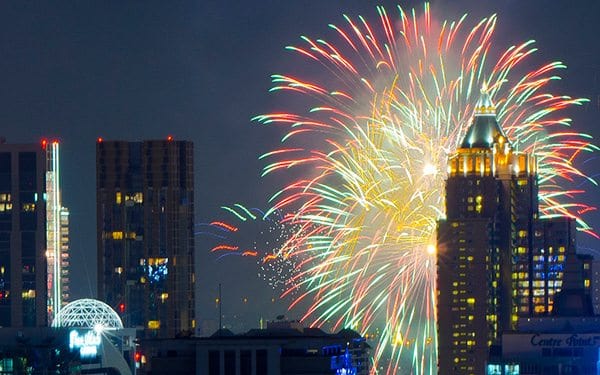
By Mike Behnken (CC BY-ND 2.0 licence)
What do you think? When is the best time to visit Thailand?

